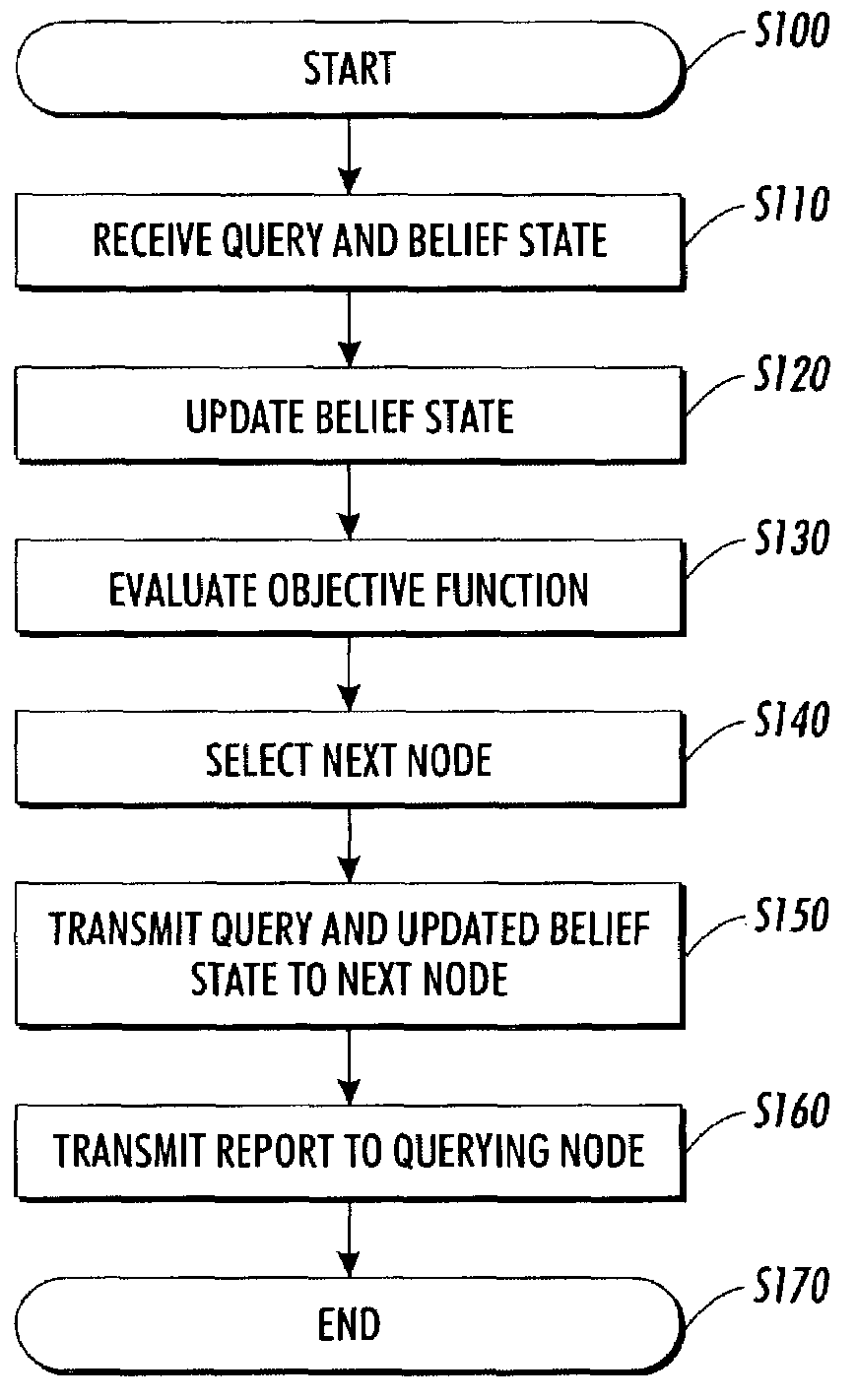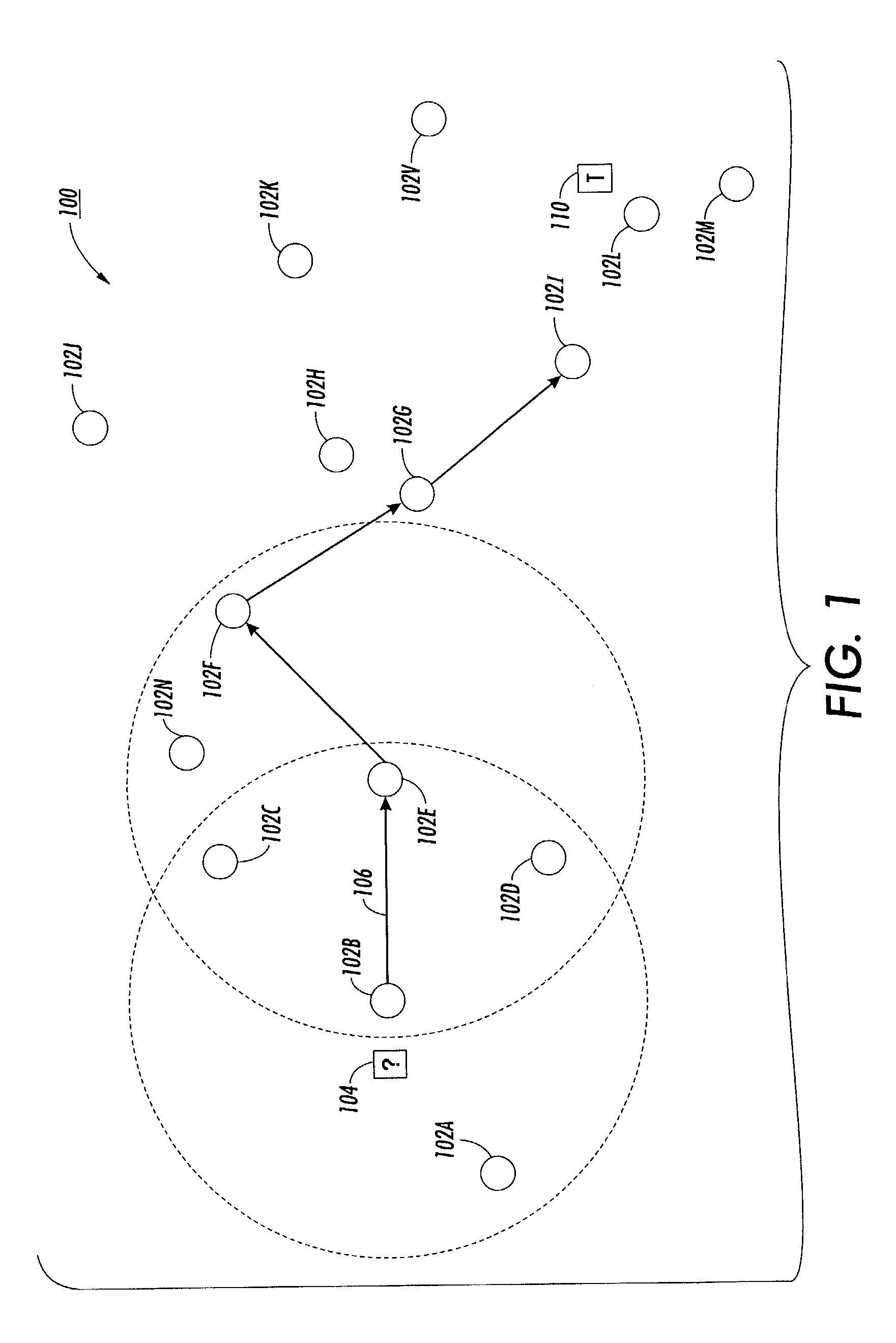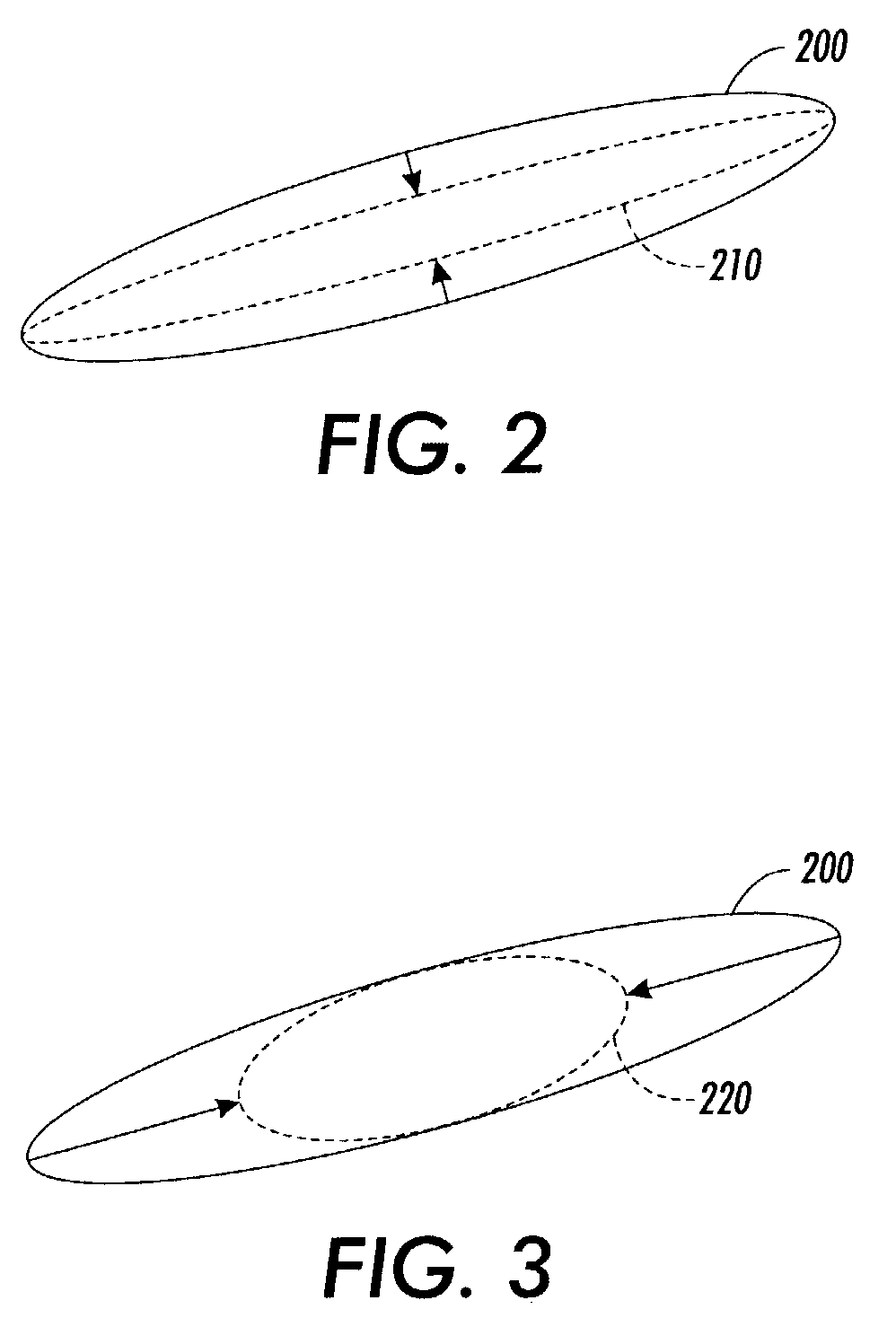Systems and methods for constrained anisotropic diffusion routing within an ad hoc network
a technology of anisotropic diffusion and network, applied in frequency-division multiplex, high-level techniques, instruments, etc., can solve the problems of inconvenient blindly combining data from each sensor in an ad hoc network, inconvenient routing, and inability to achieve the effect of reducing latency, improving energy efficiency, and improving scalability
- Summary
- Abstract
- Description
- Claims
- Application Information
AI Technical Summary
Benefits of technology
Problems solved by technology
Method used
Image
Examples
Embodiment Construction
[0053]FIG. 1 illustrates an exemplary embodiment of a network for constrained anisotropic diffusion routing according to this invention. As shown in FIG. 1, network 100 comprises a plurality of nodes 102A, 102B, 102C . . . 102V . . . . In various exemplary embodiments, each node comprises one or more sensing devices, one or more microprocessors, one or more storage devices, and one or more communication links.
[0054]In various exemplary embodiments of the systems and methods according to this invention, the nodes 102 are sensors and the network 100 is a sensor network. Without causing confusion in terminology, “node” and “sensor” are used interchangeably in the following context when describing a sensor network. In various exemplary embodiments, at least some of the sensors include a microphone measuring acoustic signals. In various other exemplary embodiments, at least some of the sensors include a thermometer measuring temperature. In various other exemplary embodiments, the sensor...
PUM
 Login to View More
Login to View More Abstract
Description
Claims
Application Information
 Login to View More
Login to View More - R&D
- Intellectual Property
- Life Sciences
- Materials
- Tech Scout
- Unparalleled Data Quality
- Higher Quality Content
- 60% Fewer Hallucinations
Browse by: Latest US Patents, China's latest patents, Technical Efficacy Thesaurus, Application Domain, Technology Topic, Popular Technical Reports.
© 2025 PatSnap. All rights reserved.Legal|Privacy policy|Modern Slavery Act Transparency Statement|Sitemap|About US| Contact US: help@patsnap.com



